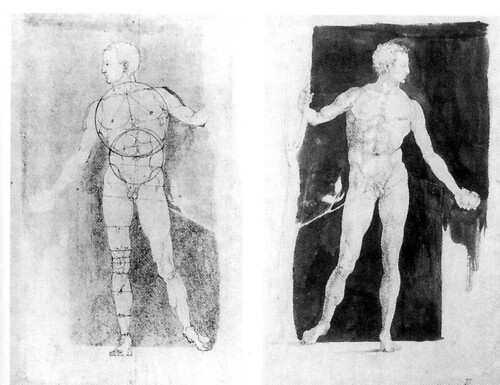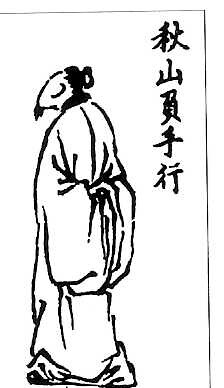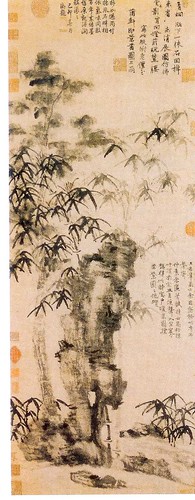Following up a quote on Thomas Hahn’s site I got a hold of Francois Julien’s The Impossible Nude – Chinese Art and Western Aesthetics.1 Jullien is interested in the question of why the Chinese artistic tradition did not have nudes and, by extension, why the Western tradition was so obsessed with them.
The existence of the nude is made possible primarily by what, which the Greeks, we came to understand by “form”: a form that functions as a model, whose background is often mathematized and geometrized, and takes on the value of an ideal as it fixes an identity of essence (the eidos) -this is what was consecrated by the nude. p.33

The nude is thus a form in the Platonic sense, “whose contour detaches it from the world and resettles it in itself” (p.75) and always posed (p.78) Chinese artists were always more interested in things in relationship to their surroundings, and thus were always uninterested in painting “mirrored reflections” (which Da Vinci, for one very much wanted to do), avoided poses and instead wanted to capture the “natural” which is seen through interaction.
Here is an illustration from the painter’s manual The Mustard Seed Garden, showing a man

“in the autumn, in the mountains, walking with hands clasped behind his back.” This indicates that the natural context-the setting and the season-which is defined beforehand, but not actually depicted, is considered inseparable from the representation of the figure itself. Otherwise, the critic goes on to say, “the mountain is merely a mountain, and the man is merely a man.”…then the intimacy of their relationship falls apart and the co-originality that the painter was trying to trace….is lost. p.55 Jullien compares the nude to something Chinese artists really liked to paint: rocks. He quotes Su Dongpo “Men, animals, palaces and even tools all have a constant form; on the other hand, mountains, rocks, bamboos, trees, waves or mist have no constant form but nevertheless possess an internal coherence that is constant” Rocks are called ‘cloud-roots’ because they contain just the same active qi as a cloud or a human, and that is what the artist should depict.(p.71)

Here is Ni Zan’s “elegant rock” which “remains blurred, vaguely defined, indistinct.. The mass of concentrated energy is not circumscribed within the form of the rock…and its “form” without being completely individualized is not inconsistent either, contains all forms, or rather it excludes none. (p.77)”It’s a good book, and if you ever wondered why Chinese painting and Western painting did not come together very well in the 20th century you should read it.
.
U of Chicago Press, 2007. It’s a good book, if a little sinological for me. ↩
I’m no art expert, but I have seen many examples of Chinese nude art.
Actually, aside from the very different medium — oils versus ink — and a very different approach to color, I’ve always thought that a lot of Chinese painting could be understood as Impressionism. There’s even an Abstract Impressionism strain in Zen painting (this is Japanese, though; I’ve never seen anything quite like it in the Chinese tradition).
Perhaps the Southern Song painting by Muqi ‘Six Persimmons’ approaches the Sengai in its coarse, elemental shapes. Although admittedly it’s a huge step from impressionism to complete abstraction. As far as I understand it, Muqi was in the tradition of impressionistic Zen painting that died out in China after the Southern Song.
“Six Persimmons” definitely comes close, as does the tradition of Zen portraiture; blame my weak memory for names and artists.
Liuzhou Laowai: there certainly are naked people in some Chinese and Japanese pictures, but that’s not the same thing as “the nude” as a genre.
“there certainly are naked people in some Chinese and Japanese pictures, but that’s not the same thing as “the nude” as a genre.”
Yes, I know that.